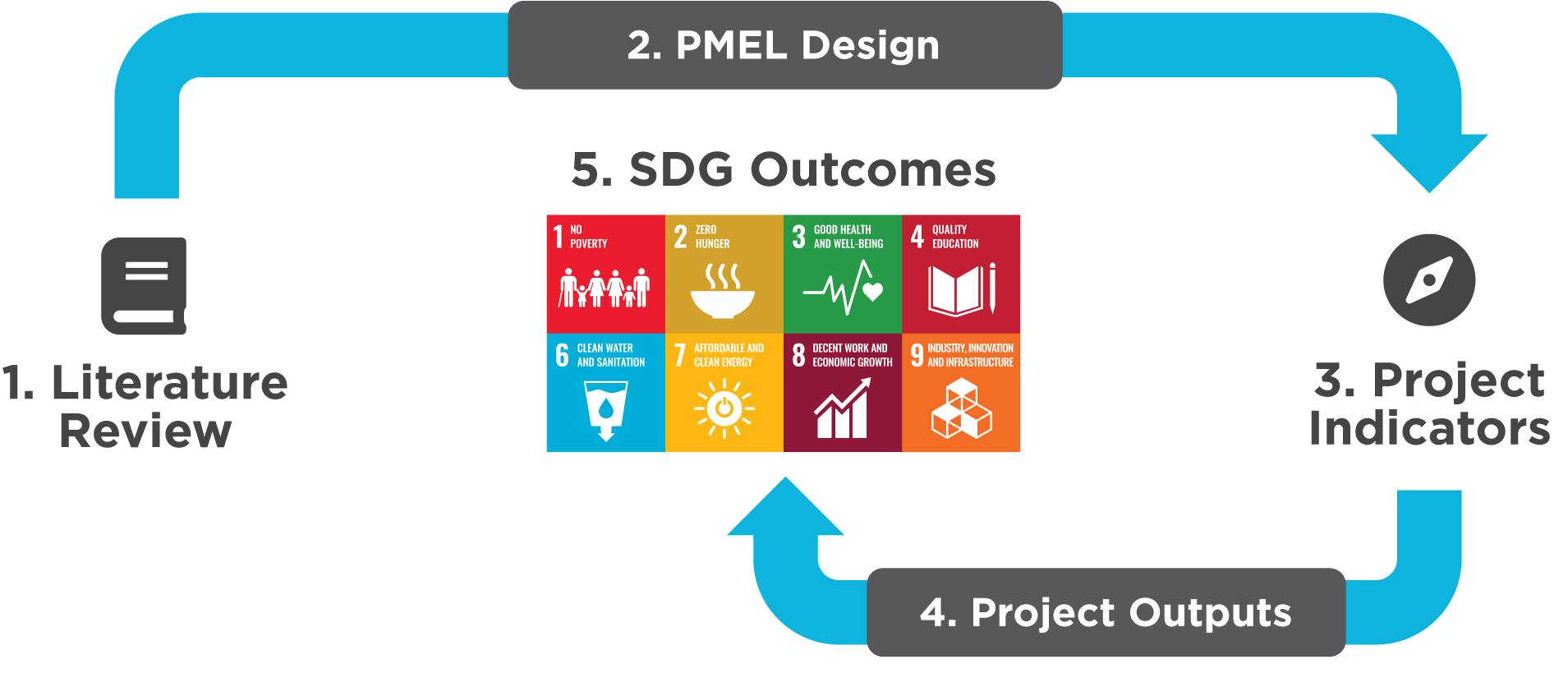Collaborating to evaluate contributions to the SDGs

Engineers Without Borders-USA (EWB-USA) recently partnered with Effect X to develop a new planning, monitoring, evaluation and learning (PMEL) system. EWB-USA had two primary objectives in mind:
- Articulating its contributions to development outcomes based upon demonstrable evidence; and
- Linking its engineering outputs to the targets and indicators of global standards (i.e., Sustainable Development Goals (SDGs), WHO/UNICEF Joint Monitoring Program standards) within the international development industry.
EWB-USA discovered catalysts to collaboration that included two relating to the evaluation design process and two relating to the overall functioning of the organization.
Design process
Like many design efforts, the process of developing the new planning, monitoring, evaluation, and learning (PMEL) system was intentionally structured as a collaboration. But two factors substantially contributed toward the accomplishment of the project goal. First, the Effect X team regularly expressed intangible concepts through visual communications that served as a form of rapid prototyping to greatly enhance the communication between team members and their ability to work together to solve design challenges. Second, the process involved sufficient time, including face-to-face meeting, to adequately address the varying perspectives and many details of the new system.

Organizational impact
The structure of the outcome mapping approach to project evaluation significantly contributed toward organizational collaboration as different departments learned a new paradigm with shared project development language. The PMEL design was additionally structured to credibly claim contribution toward eight of the SDGs, strengthening EWB-USA’s collaboration on a global scale. As illustrated above, this design approach involved reverse engineering outcomes from an extensive literature review completed as part of this project and linking them to project indicators that contribute toward relevant SDGs.
Collaboration outcome
EWB-USA also experienced greater cohesion among many departments. The enterprise-wide PMEL system now serves as a new central nervous system for the organization, fostering greater unity, clarity, and value regarding PMEL as a vital function for a growing organization. To learn more about how these catalysts could benefit your organization, contact:
Veronica Cavallaro at Engineers Without Borders-USA ()
Kurt Wilson at Effect X ()
Collaborators
Effect X develops feedback systems to help strengthen the effectiveness and impact of nonprofit organizations working in complex contexts.
Engineers Without Borders harnesses the skills of engineers to tackle the challenges that keep the world’s poorest people from living healthy, productive lives.
